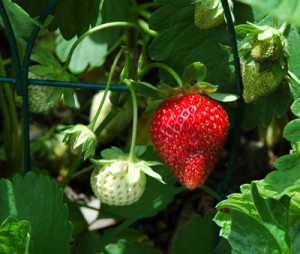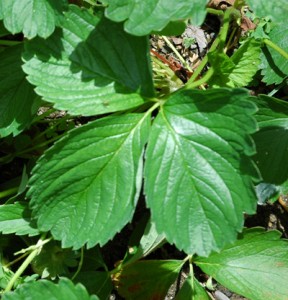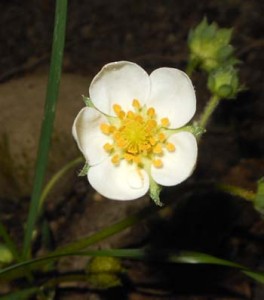Strawberry
Strawberry – Fragaria Virginiana
Common Names:
Woodland strawberry; California strawberry, Virginia Strawberry
General
The first time I came across strawberries in the wild, and knew it, I was 18 years old hiking with a friend in the coastal mountains of Oregon. He was the one that identified them. It was one of those times when it was all about camping, fishing for cutthroat trout and eating wild foods – with a lot of it being strawberries along with a smattering of blackberries, thimbleberries and a bit of wild greens. I found it strangely fulfilling camping in a tent for a week really living off the land.
The good news about strawberries is that they are easy to identify and widely distributed. The bad news is that the strawberry fruit can have a limited growing season. This is a perennial plant that spreads by seed, short rhizomes (a thick underground horizontal stem that produces roots and has shoots that develop into new plants) and leafless stolon (a long stem or shoot that arises from the central rosette of a plant and droops to the ground).
 Identification:
Identification:
If you have ever seen a strawberry plant in Home Depot, Lowes or your local garden center then you know what a wild strawberry plant looks like – only the wild strawberry is smaller. The toothed leaves are thin and basal compound in groups of 3 with a petiole generally 1” – 4”. They are sparsely hairy below. Leaf color is generally a bluish-green. The strawberry flower has 5 white petals with numerous pistils and 20-35 stamens. The flower is typically .25” – .5” wide. The fruit is white then turns red when ripe with the seeds on the outside. The plant is generally 2” – 6” tall.
Location:
Strawberries grow where there’s lots of sun: in meadows, fields, on moist ground, along the edge of woods, and on hillsides. You can find them across the U.S. and Canada except in desert/arid areas.
Edible:
The fruit ripens sometime between June and August. I have even come across strawberry fruit in the wild in late September. Obviously the fruit is edible and if you can pick enough, it can be canned, frozen or dried. The fruit of strawberries are nutritious and are full of essential vitamins and minerals.
The leaves and stems are edible and actually taste good when fresh and young. They are loaded with vitamin C – an important vitamin used to prevent scurvy. One way to enjoy the benefits of the leaves is make a tea with a handful of freshly picked leaves. For winter use you can dry out the leaves and store in a jar.
Notes of interest:
Native Americans used strawberries as a food source. The strawberry is an important food source for many wild animals from insects to deer and birds.
Growing your own strawberry patch: Strawberry plants are easy to grow if you want free fresh fruit. I like to plant my strawberries in long rows.
They should be planted in full sun in a light, loose soil, about 10” apart in rows 2’ apart. You should plant in an area that has plenty of room for your patch to spread out. Lightly fertilize the plants during the growing season. After 2 – 3 years your plants will spread – mostly from “runners”. Once a runner plant has established its own roots and is healthy I like to move it to avoid overcrowding. Keep the runners pruned back until after you pick the strawberry fruit. This allows the plant to focus on fruit production thus increasing yield. As they age plants will lose “vigor” so you should pull plants over three years old to maintain your patch’s fruit production. Younger plants are more vigorous and produce more berries.
The biggest problems I have in the Northeast are rabbits (they will eat the plant right down to the ground) and gray squirrels (they will sneak in like the rats they are and eat the fruit just as it is ripening). I find the best way to protect plants and fruit is to cover the row with deer netting. It will let in the bees for pollination but keep out rabbits and squirrels.